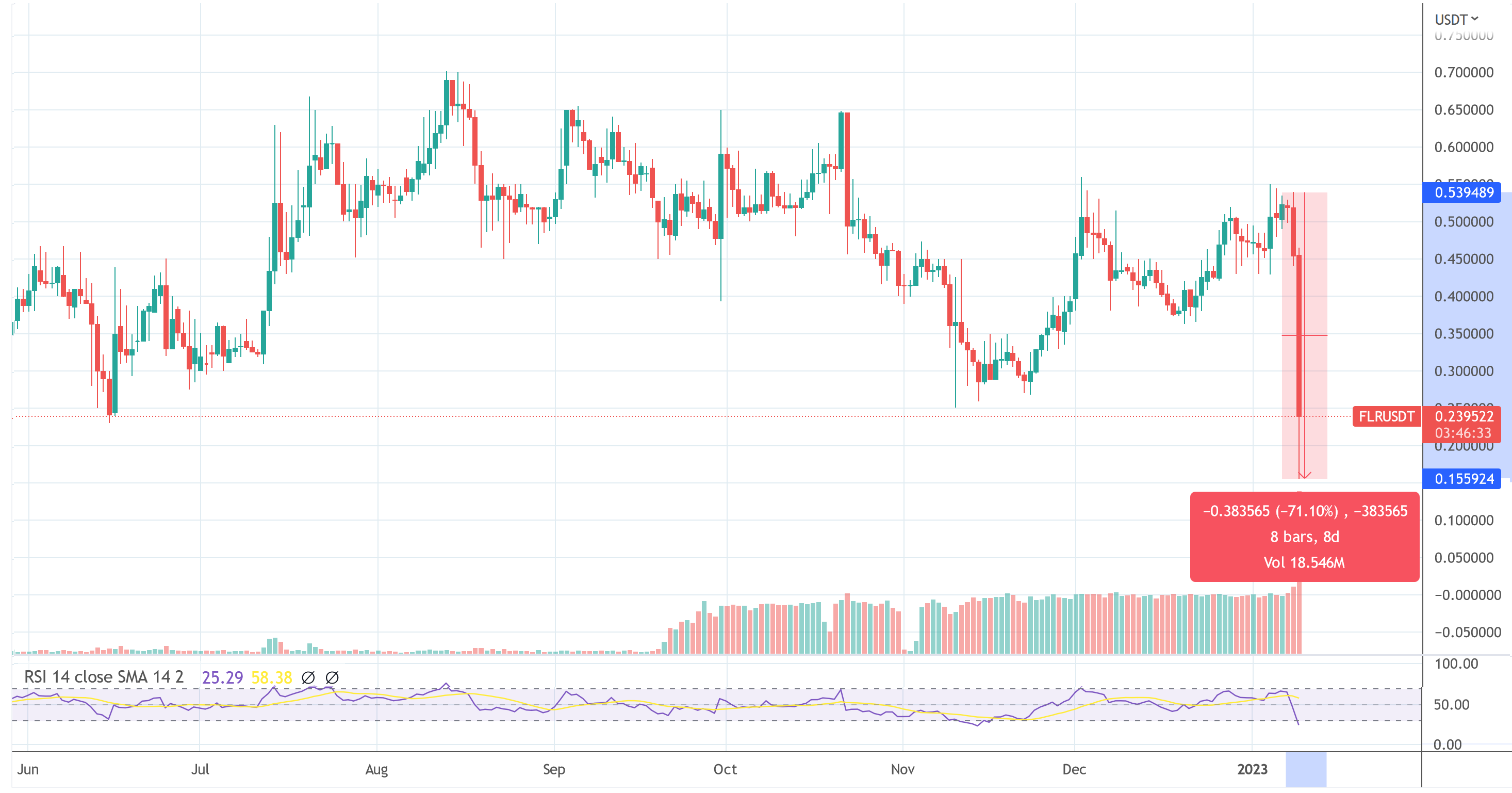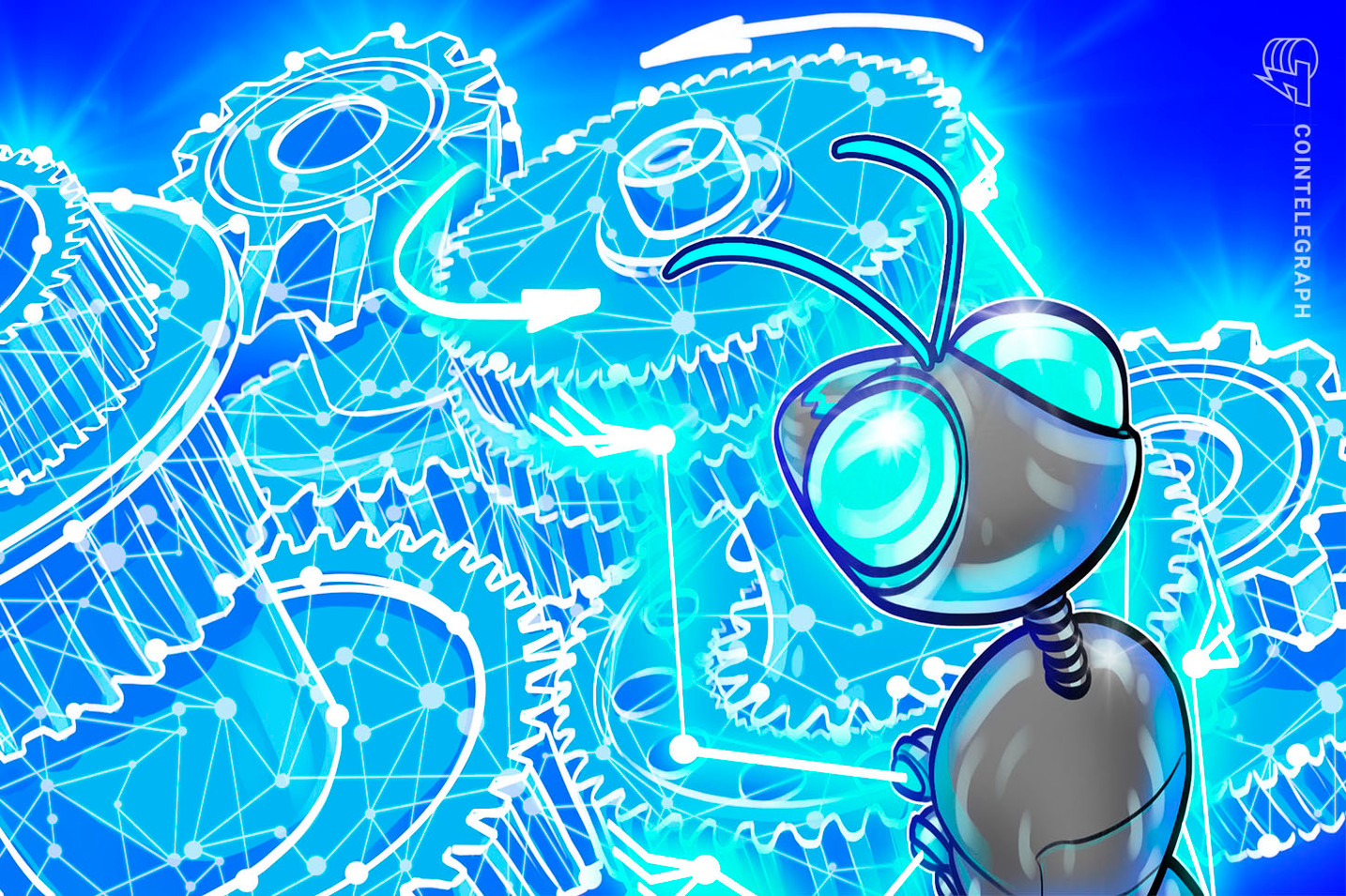Flare blockchain has raised $35 million in a private round that included investment from Kinetic, Aves Lair and others, according to a press release.
Flare Network Will Burn 2.1B FLR to Support Ecosystem Health
Some 198 million FLR will be burned immediately with a further 66 million set to be burned monthly until January 2026.
Flare integrates blockchain API on Google Cloud Marketplace

Google Cloud Marketplace adds support for nine different blockchain APIs, including Bitcoin and Ethereum, through integration with layer-1 Oracle network Flare.
Ripple CTO Advises Selling Flare (FLR) Tokens, Raises Serious Allegations
Ripple CTO David Schwartz voiced harsh criticism against the Flare Network in a series of tweets today. After more than two years following the snapshot for XRP holders, the project finally conducted its airdrop for the FLR token on Monday, January 9.
As NewsBTC reported, the FLR token already experienced a massive dump of more than 71% on Bitrue in the run-up to the airdrop, where the token could already be traded as IOU. After that, things didn’t get much better and FLR dropped even further, totaling a loss of 93% since Sunday, January 8. At press time, FLR was trading at $0.0437.
Thus, the FLR price is in no man’s land. The IOU on the token debuted back in January 2021 at Bitrue and started at a price of $0.0831. After that, the FLR token went up to $2.2472. At no point did FLR trade below its January 2021 debut price.

Ripple CTO Raises Harsh Allegations Against Flare Team
Via Twitter, Ripple’s chief technology officer wrote that the current rules for holding Flare for subsequent airdrops provide absolutely no incentive not to sell Flare now. “You lose *nothing* if you sell now,” Schwartz said.
He added that while it’s true that XRP holders miss out on subsequent airdrops, you don’t lose them. As the Ripple CTO explained, you can get 100% of their value if you sell your Flare, as the buyer can wrap the token and get the airdrops.
In general, Schwartz considers the distribution of the airdrop “a very strange decision.” For a long time, the project advertised that XRP holders would receive the full amount of FLR tokens right away.
However, the team did not keep its promise. They declared that with the first airdrop, only 15% of the total amount of 1.0073 FLR will be distributed for each XRP. The remaining 85% of FLR tokens will be airdropped in 36 monthly installments, with the method of distribution still dependent on a community vote.
Schwartz sees this as a breach of their commitment. “I want to be wrong, but I don’t see how,” the Ripple CTO said, following up with another serious allegation:
I feel bad saying this. I love the project and want the best for it and want to believe the best about it. But my honest opinion is that they leveraged the XRP community to grow and weakened their promises drastically when they felt they didn’t need it anymore.
While Schwartz qualified his statement in the following tweet when he wrote that this doesn’t mean they are “dishonest or that their project is bad,” he also said that XRP has evolved while the Flare Network team “failed to deliver on some promises” from the early days.
You can love Flare and love XRP too. It’s not one or the other. But I don’t have happy fuzzy feelings about how it went down.
Schwartz Advises To Sell The FLR Token (Later)
In response to a user’s follow-up question about whether it is now the best time to “take profits,” Schwartz replied:
I’m not saying people should sell. I’m just saying that they are acting irrationally if they don’t sell because they want the value of the remaining 85% of the airdrop. That’s just not rational.
Another user countered the argument by saying that FLR is already “worthless” after the massive crash, so owners of the token should rather wait. The Ripple CTO agreed, citing that “now is probably the worst time to sell. It would be kind of silly not to wait that out.”
Featured image from Forbes, Chart from TradingView.com
Layer-1 EVM oracle platform Flare launches to boost interoperable DApps

Layer 1 EVM blockchain Flare goes online, aimed at providing developers a platform to build decentralized interoperability applications.
Ripple (XRP) Related Flare Network Token Airdrop: FLR dumps by 71%
In late 2020, the Flare Network attracted a lot of attention in the Ripple (XRP) community. The creators wanted to open up the DeFi space for Ripple and announced an airdrop of Flare (FLR) tokens for all XRP holders.
However, holders of XRP had to be patient for a long time. The launch was postponed several times. But today is finally the day: at 6:59 p.m. EST, the distribution of FLR tokens will take place.
The FLR Token Distribution event is just 24 hours away.
Join the #Flare team and guests on Twitter tomorrow. The distribution starts at 23:59 UTC sharp. The stream will start a few minutes before.#ConnectEverything pic.twitter.com/CLtmUird1Z
— Flare
(@FlareNetworks) January 8, 2023
However, there is also bad news. Just before the launch, the FLR/USDT trading pair is seeing a massive dump of around 71% on Bitrue.
The exchange was the only trading platform besides Poloniex to date where FLR could be traded as an IOU. As can be seen in the 1-day chart from TradingView, the FLR/USDT pair has seen a massive dip over the last two days on Bitrue.
The token was trading at $0.5394 yesterday and crashed to a low of $0.1559 at times today before recovering to $0.2395 at press time. With this, the FLR token is still posting a loss of around 55% compared to two days ago.

Airdrop For XRP Holders Is Finally Here – Too Late?
When the project started, the narrative was clear: Ripple (XRP) lacked access to the booming sector of decentralized finance (DeFi). This has since changed, at least in part. Ripple has been developing a bridge to Ethereum (ETH) on its own to enable smart contracts and DeFi. Moreover, the XRP Ledger now has a DEX and its own NFT standard.
To adapt to it, the project now aims to provide smart contract capabilities for blockchains without them, starting with Ripple (XRP). Flare Network is a layer 1 Ethereum Virtual Machine (EVM) based interoperable blockchain based on the Proof of Stake (PoS) consensus mechanism.
However, whether Flare Network can convince investors after its 2-year delay with its new approach or whether there will be another dump tonight when the majority of Ripple (XRP) investors receive their FLR tokens, remains to be seen. Today’s dump suggests that some investors may not be interested in FLR in the long term.
FLR Token Distribution
For every 1 XRP in the snapshot (taken in December 2020), 1.0073 FLR will be airdropped. Today, the first 15% of this amount will be distributed via airdrop. The remaining 85% of the tokens will be paid out in 36 monthly installments. The method of distribution depends on the outcome of the community vote on the Flare Improvement Proposal 01 (FIP.01).
If the community approves the proposal, the remaining 36 monthly distributions will be decentralized on the chain. The tokens will be divided among the wallets that packaged FLR tokens (WFLR).
If the community rejects the proposal, the same self-storage wallets and the same centralized exchanges that received the initial airdrop will receive one airdrop per month for 36 months.
Featured image from iStock, Chart from TradingView.com
Could Bitcoin miners’ troubles trigger a ‘death spiral’ for BTC price?

Forced selling from Bitcoin miners raises concern about BTC price, but the use of renewable energy and the oil and gas industry’s growing interest in BTC are longterm positives.
Blockchain tech firms AllianceBlock and Flare integrate technologies to expand their DeFi ecosystems

The two seek to improve their blockchains with each other’s tech from cross-chain bridges to decentralized exchanges to oracle networks.

